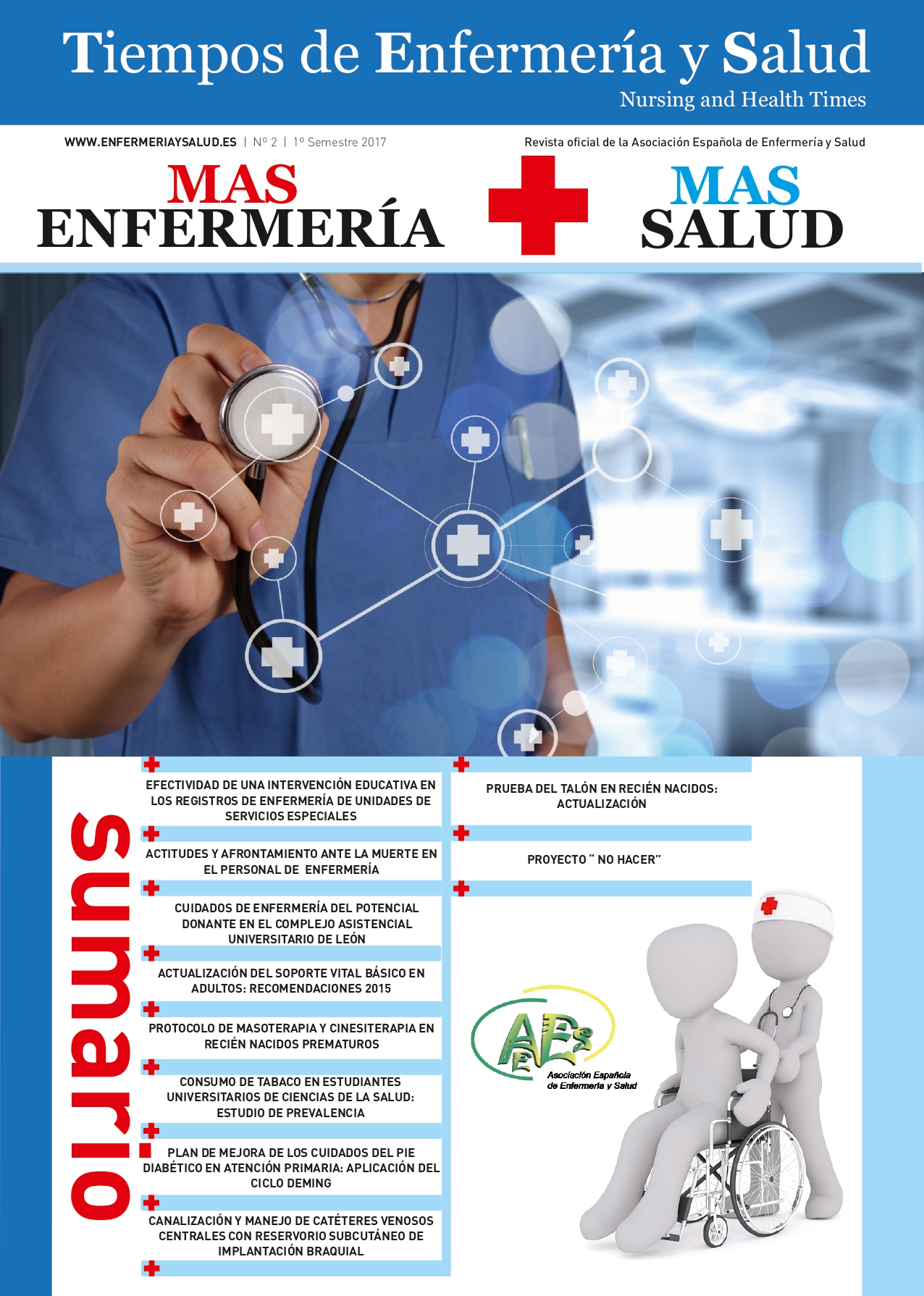NEWBORN HEEL TEST: UPDATE
Abstract
The program for the early detection of congenital diseases is a fundamental prevention strategy within the Public Healthcare System. It consists of obtaining the sample of capillary blood from the heel of the newborn which enables to identify a series of diseases that if not treated at early stage, they produce serious consequences. The first metabolic tests begin in Spain, as in other surrounding countries, in the late 1970s. They begin in Granada in 1968 and later, their practice extends to the rest of the country. Initially they were primarily focused on the screening of Congenital Hypothyroidism and Phenylketonuria, but later, thanks to the introduction of tandem mass spectrometry (MS/MS) in neonatal screening, multiple pathologies were detected with a single determination. There have been recent changes in the procedure of collection of the sample in Castile and Leon, although the diseases that are detected have not been modified. The nursing staff in charge of the development of the test must be trained and updated in the latest advances in this field.

